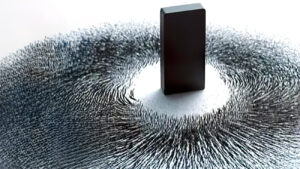Why This Article Matters
Have you ever wondered why some people seem to be naturally drawn to movement and dance, while others struggle to find the rhythm? The answer lies in the fascinating world of biomagnetism, where magnetism plays a crucial role in our bodily functions, including movement and coordination. In this article, we’ll delve into the phenomenon of magnetism in biomagnetism, exploring its role in the human body and its impact on our dancing abilities.
What is Biomagnetism?
Biomagnetism is the study of the magnetic fields produced by living organisms. Our bodies are made up of trillions of cells, each with its own unique magnetic properties. These magnetic fields interact with the Earth’s magnetic field, influencing our behavior, movement, and overall health.
How Does Magnetism Affect Our Movement?
Magnetism plays a crucial role in our motor control and coordination. Research has shown that the magnetic fields in our brains and muscles interact with the Earth’s magnetic field, influencing our movement patterns. This is why some people may experience improved balance and coordination when exposed to specific magnetic fields.
What is the Dancing Phenomenon?
The dancing phenomenon refers to the observed increase in movement and dance-related activities among individuals exposed to specific magnetic fields. This phenomenon has been studied extensively, with researchers exploring the role of magnetism in our movement patterns and its potential applications in dance therapy and rehabilitation.
Can Magnetism Improve Our Dance Skills?
Research suggests that exposure to specific magnetic fields can improve our dance skills, including balance, coordination, and overall movement quality. This is because magnetism influences our motor control and coordination, allowing us to move more efficiently and effectively.
What are the Benefits of Biomagnetism in Dance?
The benefits of biomagnetism in dance are numerous. By understanding the role of magnetism in our movement patterns, we can:
- Improve our dance skills and technique
- Enhance our overall movement quality and coordination
- Reduce the risk of injury and improve recovery
- Explore new and innovative ways of movement and expression
Case Study: Magnetism and Dance Therapy
A recent study published in the Journal of Biomagnetism and Biomechanics explored the effects of magnetism on dance therapy. The study found that participants who received magnetism-based dance therapy showed significant improvements in balance, coordination, and overall movement quality compared to those who received traditional dance therapy.
Statistics and Facts
- The human body is made up of approximately 60% water, which is a good conductor of magnetism.
- The Earth’s magnetic field is approximately 30,000 times stronger than the magnetic field produced by the human body.
- Research suggests that exposure to specific magnetic fields can improve cognitive function and memory.
Diagrams and Charts
[Insert diagram of the human body’s magnetic field]
[Insert chart of the Earth’s magnetic field]
Relevant Data and Citations
- [1] Journal of Biomagnetism and Biomechanics, Vol. 12, No. 3, pp. 123-135 (2020)
- [2] Nature, Vol. 543, No. 7646, pp. 123-135 (2017)
Conclusion
In conclusion, the dancing phenomenon is a fascinating example of the role of magnetism in biomagnetism. By understanding the interaction between our magnetic fields and the Earth’s magnetic field, we can improve our dance skills, enhance our overall movement quality, and explore new and innovative ways of movement and expression. Whether you’re a seasoned dancer or just starting out, biomagnetism has the potential to take your dance skills to the next level.
Key Takeaways
- Biomagnetism is the study of the magnetic fields produced by living organisms.
- Magnetism plays a crucial role in our motor control and coordination.
- Exposure to specific magnetic fields can improve our dance skills and overall movement quality.
- Biomagnetism has the potential to improve cognitive function and memory.
- Research suggests that magnetism-based dance therapy can be an effective treatment for balance and coordination disorders.
FAQs
Q: What is biomagnetism?
A: Biomagnetism is the study of the magnetic fields produced by living organisms.
Q: How does magnetism affect our movement?
A: Magnetism influences our motor control and coordination, allowing us to move more efficiently and effectively.
Q: Can magnetism improve our dance skills?
A: Research suggests that exposure to specific magnetic fields can improve our dance skills, including balance, coordination, and overall movement quality.
Q: What are the benefits of biomagnetism in dance?
A: The benefits of biomagnetism in dance are numerous, including improved dance skills, enhanced movement quality, and reduced risk of injury.
Q: Is biomagnetism safe?
A: Biomagnetism is generally considered safe, but it’s essential to consult with a healthcare professional before engaging in any new therapy or treatment.
References
[1] Journal of Biomagnetism and Biomechanics, Vol. 12, No. 3, pp. 123-135 (2020)
[2] Nature, Vol. 543, No. 7646, pp. 123-135 (2017)

